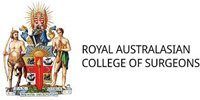Gallbladder Disease
WHAT IS YOUR GALLBLADDER?
The gallbladder is a pear-shaped organ, connected with the common hepatic duct arising from the liver.
The gallbladder stores and concentrates bile which is produced by the liver and helps in digestion of fats by releasing the bile into the common hepatic duct and then into the bowel.
Bile is a yellow-green liquid, composed of water, lecithin, cholesterol, bile salts and bilirubin.
WHAT CAUSES GALLSTONES?
Occasionally, stones may develop in the gallbladder or duct due to an imbalance in the ratio of cholesterol, bile salts, or bilirubin in the bile.
The optimal ratio allows for bile to remain in a liquid state, however an imbalance will lead to the formation of stones.
Based on their composition, gallstones can be categorized as either
- cholesterol stones, or
- pigment stones.
Cholesterol stones comprise of more cholesterol and bilirubin, but less bile salts, whereas pigment stones have more bile salts, along with calcium.
WHO IS AT RISK OF GALLSTONES
There are various risk factors that may result in the development of gallstones, such as :
- Obesity
- Rapid weight loss-Increases fat metabolism of the body that causes excess cholesterol secretion by the liver.
- Prolonged fasting- May produce over concentration of the bile with cholesterol to produce gallstones.
- Elevated estrogen production-Occurs during pregnancy or while taking hormone replacement therapy or birth control pills and increases cholesterol levels.
- Gender-Women are more prone to gallstones formation as compared to men.
- Ethnicity-Native Americans have genetically influenced higher levels of cholesterol in bile that increases risk of gallstones.
In addition, people with high triglyceride levels and conditions such as anemia, sickle-cell disease, thalassemia, hereditary spherocytosis, elliptocytosis, or jaundice, are at high risk of developing gallstones.
GALLSTONE SYMPTOMS
A stone that lodges in the cystic duct or Hartmann’s pouch can result in blockage of the normal flow of the bile.
This presents as severe pain in the upper abdomen, or biliary colic. If the pain lasts for hours and resolves, then this is likely an episode of biliary colic.
Gallstones may not cause any symptoms but when symptoms appear, they usually are sudden and often referred to as a "gallbladder attack".
Typical symptoms include:
- Upper abdominal pain
- Back pain between the shoulder blades
- Nausea and vomiting
- Abdominal bloating and belching
TYPES OF GALLBLADDER DISEASE
Cholesystitis
If the cystic duct blockage from a stone continues, then this may lead to gallbladder inflammation, a condition known as cholesystitis.
This is usually characterized by a period of pain lasting longer than that of biliary colic, and may last more than 24 hours and up to several days. This will require assessment in hospital, antibiotics and this may require emergency surgery.
Acalculous Cholecystitis
Inflammation of the gallbladder without the presence of stone formation is called acalculous cholecystitis, and is often seen in patients who are very sick in hospital and is precipitated by severe illness. This can also be caused by prolonged fasting.
Other less common diseases of the gallbladder include gallbladder polyps and gallbladder cancer.
DIAGNOSIS OF GALLSTONES
Gallstones and cholecystitis (inflammation of the gallbladder) can be diagnosed after an initial examination with an ultrasound.
TREATMENT FOR GALLSTONES
Gallstones are very common. People who have them may not have any symptoms and therefore may not need treatment, until and unless it produces pain or discomfort.
GALLSTONE SURGERY
In most cases, treatment of gallstones involves surgical removal of the gallbladder which does not affect the normal physiological functioning of the body.
Gallbladder surgery is considered the best option for gallstone treatment. Most people can live a normal life without their gallbladder, as gallbladder removal results in direct passing of the bile from the liver into the small intestine through ducts.
Cholecystectomy
The surgery to remove the gallbladder is called a cholecystectomy and is usually performed through laparoscopic techniques which are minimally invasive as compared to open abdominal surgery which requires a long incision.
In laparoscopic gallbladder surgery, small incisions are made to insert surgical instruments, along with a laparascope that has a light source with a camera on the end. The laparoscope helps to locate the gallbladder and tiny instruments are used to surgically remove it.
Gallbladder surgery may require an overnight stay in the hospital.
The major complication of gallbladder surgery is injury to the bile ducts that can result in leakage of the bile inside the body requiring further procedures and/or surgery.
Endoscopic Retrograde Cholangiopancreato Graphy
In cases where gallstones are present inside the bile ducts, endoscopic retrograde cholangiopancreato graphy (ERCP) which involves a camera going down the mouth may need to be done.
ERCP technique involves swallowing a long, flexible tube, with a light source, called an endoscope that is connected with a viewing monitor.
















